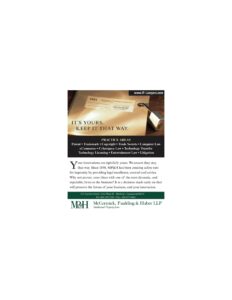Hearing that the theme of this issue would be “Law and Legalities” immediately brought me back to my graduate coursework at UConn nearly 20 years ago and a chapter of my doctoral dissertation entitled “‘We have been bereved of our native land, we have been torn from the breast of our mother Country’: Indian Responses to Dispossession.” Given that the law—its imposition and its manipulation—was at the center of colonial possession and Indian dispossession of lands, I thought I would share my thoughts on the subject, one that I explored extensively when conducting research for my dissertation. (Quoted material is from the Indian Papers in the Connecticut State Library and Archives.)
In the 18th century, even though many reservations’ lands remained undivided, Indian tribes continued to experience tremendous buying pressure from some English settlers and proprietors. As colonial laws gradually restricted or prohibited the sale of Native lands to outsiders, the English also became frustrated by increasingly litigious Indian leaders or representatives. When confronted with restrictions, those anxious to acquire Indian lands found new ways to circumvent existing legislation. So egregious were such actions that Mohegan leaders petitioned that Indians, who maintained their lands in common, had “become a prey to designing avaricious and artfull men” who found new ways to circumvent existing legislation. Communal lands, though never intended to be part of the land market and more difficult to acquire through individual indebtedness, were still being legally challenged, encroached upon, and manipulated through various forms of English abuse and chicanery. This involved, among other things, attacking the legal basis of Indian rights to the land either through title or by challenging the legitimacy of the Indian population occupying reserved lands.
After a 1717 Connecticut law prohibited the sale of Indian lands, the “Proprietors of the Common and Undivided Lands” in New Haven and in Groton were drawn into new disputes between Indians and their English neighbors. By contesting the boundaries of Indian lands and then negotiating land swaps in both places – Quinnipiac to be resettled on land about 20 miles to the north in Waterbury and land at Mashantucket “South Hill” to be exchanged for land several miles away at Walnut Hill – Indians were separated from their ancient rights to particular “sequestered lands” or reservations. With this, their legal connections and rights were placed on more tenuous footing. In both cases, it is unclear if Pequots or Quinnipiacs ever enjoyed rights to their new lands.
Indian leaders, anxious to quickly settle any challenges to their remaining land, may have unwittingly granted the English proprietors carte blanche to encroach further onto their lands. At Mashantucket, beginning in October 1732, a longstanding dispute over an area known as “West Half” arose when English residents of Groton began building houses and challenging Pequot title to the land, indicating that the Pequot only had the rights for living, planting, and cutting firewood. In land deeds, the English even labeled portions of the Pequot boundary as “the pretended Division line of the Indian or Mashantucket Land.” By further stating that Pequot lands were actually town commons, the Indians had surrendered grazing rights to the English and, by extension, the “fee” or absolute title to the land.
Dr. Jason Mancini is executive
director of Connecticut Humanities
and former executive director of the
Mashantucket Pequot Museum and
Research Center.
After an initial victory for the Pequot attorney Joseph Wyaugs, in 1751, the case was appealed. The English neighbors raised concerns about who the Mashantucket residents were, contending that of the principal families at Mashantucket, “The Socks belong to Mohegan. The Quocheats belong to Mohegan. The Chunks belong to Mohegan. The Woqaundom belong to Stonington [Lantern Hill or Eastern Pequot tribe]. The Nimrods belong to Mohegan. The Toby belong to Mohegan. The Charles belong to Long Island [Montauk tribe]. The Shantup belong to Mohegan.” By focusing attention on the male members of the community who had married Pequot women, the English highlighted aspects of inter-community marriage and what appear to be matrilocal residency patterns. This tactic proved especially useful as the neighbors successfully impugned Pequot rights to nearly 700 acres of reserved lands, which were permanently lost in 1762.
Today, land acknowledgments, the #landback movement, the creation of the term “Land-Grab Universities,” and a national reckoning concerning racial justice call attention to how power, vis-à-vis law and legalities, has been articulated in this country. The English dispossession of tribes on this continent began in the wake of the Pequot Massacre (1637); the Treaty of Hartford (1638) was the first Indian treaty seeking to legitimate cultural genocide, and the earliest reservations (1639) are located here. It was given these circumstances that the creation of Connecticut became possible, eventually through royal charter or patent rooted in English law and that was predicated on a “just war” with the Pequots. Often, events such as those noted above are erased from colonial history, but exploring archives and reconnecting facts across years, decades, and centuries exposes the legal processes that resulted in the near-total expropriation of Indigenous land to create these United States.





